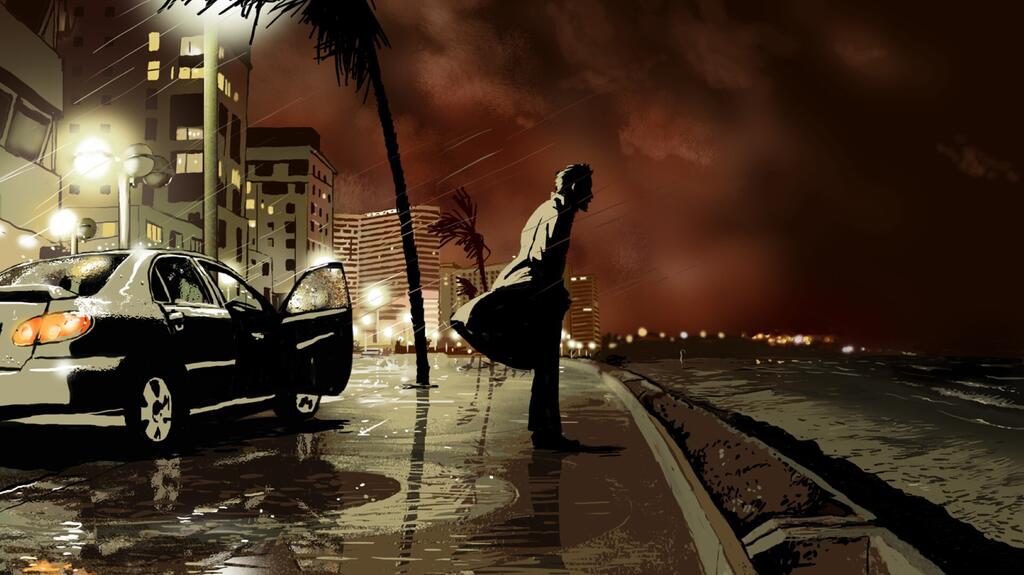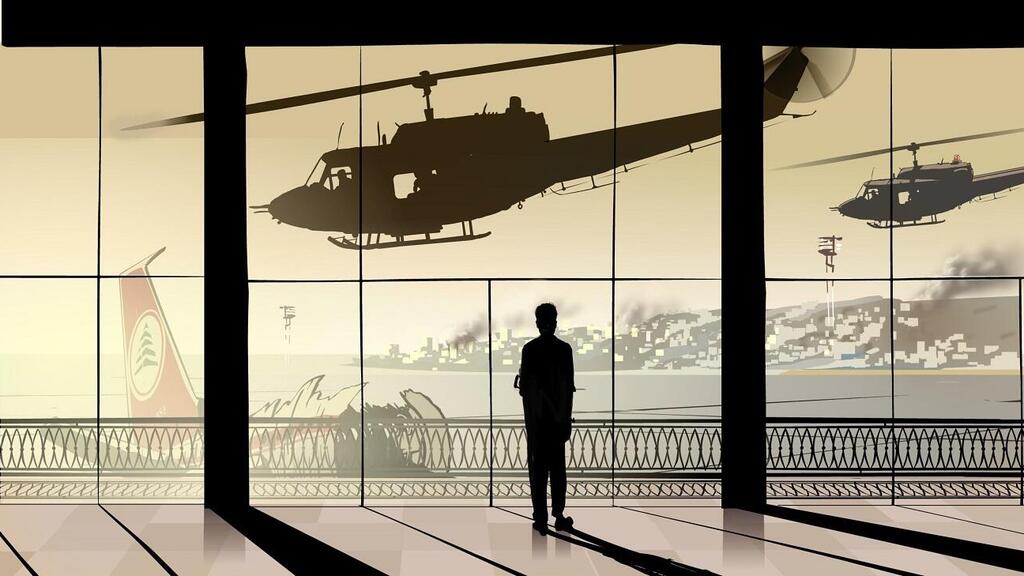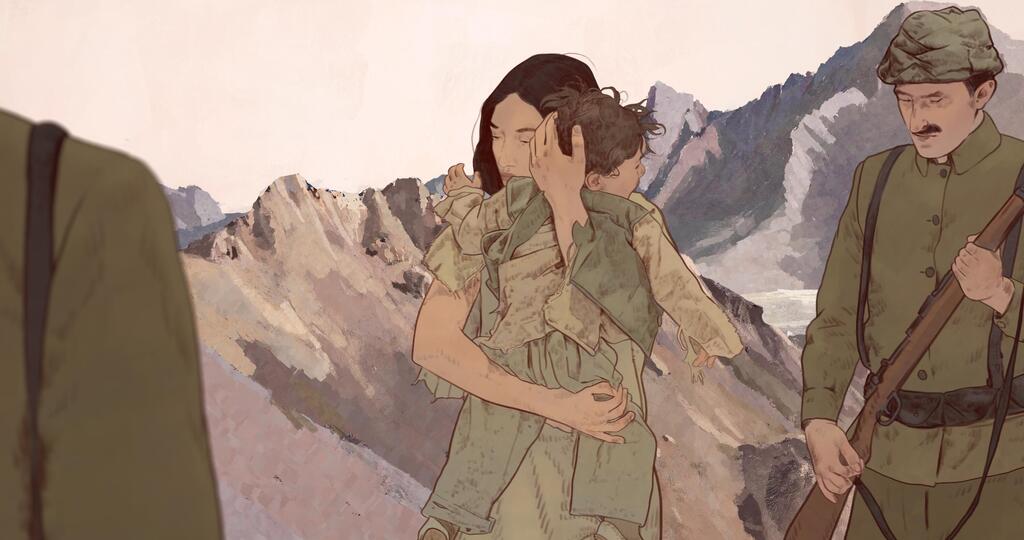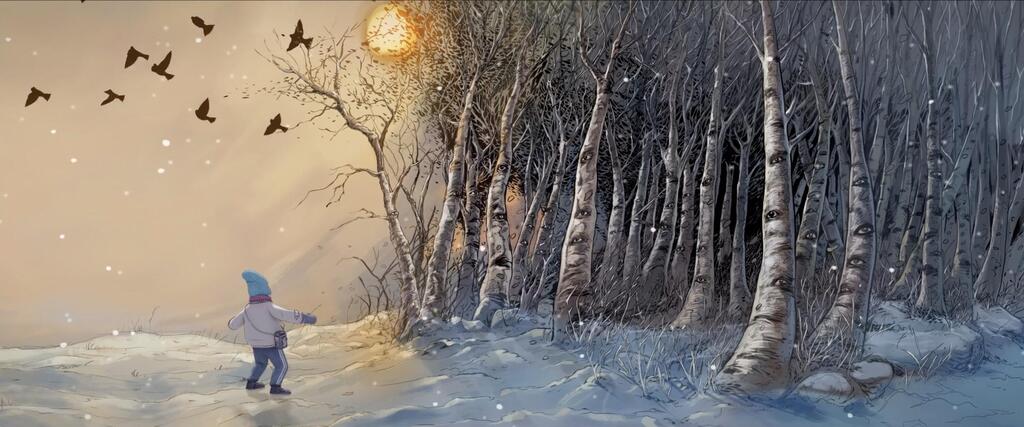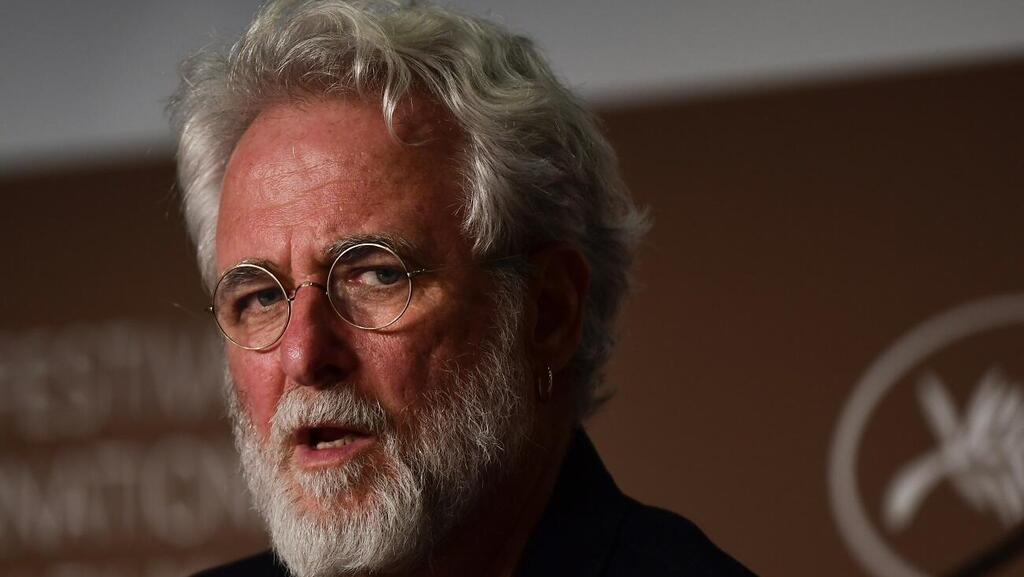In 2008, Ari Folman made history. His animated creation "Waltz with Bashir" received countless accolades, won numerous awards worldwide and catapulted the Israeli film industry to the forefront - from the Cannes Film Festival to the Academy Awards.
The film's nomination for the Best Foreign Language Film Oscar was the most prominent in an impressive three-year streak of representatives from Israel being named as candidates for the coveted statuette in this category.
But let's leave behind the national pride that once burned in many hearts in Israel. "Waltz with Bashir" is a true milestone in the history of international cinema. It is a rare blend of originality that has inspired creators all over the world. From then until today the director from Haifa has demonstrated in his unique vision, as expressed on the screen, how memories, emotions and traumas from the past can be reconstructed through animation and presented to the audience as a documentary creation. This breakthrough is still felt today.
"Waltz with Bashir" touched the members of the American motion picture academy because of Folman's daring attempt to amplify his tough experiences from the Lebanon War and the Sabra and Shatila massacre. Two out of the 92 films that competed for the 2023 foreign language Oscar are animated documentaries: "Aurora's Sunrise" by Inna Sahakyan was the entry for Armenia, while the Chinese-language film "Eternal Spring" by Jason Loftus represented Canada. Both films did not make the shortlist, but reflect a trend in acceptance of the innovative approach to documentary.
Both of these works reconstruct the personal experiences of people from and their life stories against the backdrop of oppressive authoritarian rule. "Aurora's Sunrise" depicts the personal life events of Aurora Mardiganian, an Armenian Holocaust survivor, whose experiences as she wrote them at a young age were adapted for the 1919 film, "Ravished Armenia," directed by Oscar Apfel. In "Eternal Spring," Loftus collaborates with the comic artist Daxiong to recreate through his official illustrations the persecution by the Chinese government of the Falun Gong movement to which he belongs, and depicts in detail how some of his colleagues organized a bold operation to take over the national television broadcasts as an act of protest.
"Every filmmaker who creates an animated documentary probably got inspiration from 'Waltz with Bashir,' including me," Loftus tells Ynet. "There's something about this film that made me think about it. I knew it was based on Ari's personal story and resonated with his past traumas. I assume it helped him understand and come to terms with those events.
"That really intrigued me. I think this question also influenced the direction we took in 'Eternal Spring,' where we examine the role of art and the creative process in understanding and healing. Initially, our conventional perception was that animation is very subjective and mainly for children. I believe 'Waltz with Bashir' opened up new possibilities for us in this medium. From a production standpoint, Folman didn't have the budget that major animation studios have, but he found a way to express beauty through his style. That's one of the things that inspires independent filmmakers," Loftus says.
Sahakyan also sees "Waltz with Bashir" as a true masterpiece in the cinematic landscape, and acknowledges its personal impact on her.
"It's the first docu-animation I've ever seen, and it blew me away. Not just because of the animation itself. What touched me was the way Folman deals with his own memories and overcomes the trauma in his journey toward truth and through his ability to express it as an artistic cinematic story," she says.
"As someone who comes from a country still ravaged by war and with a history of genocide, I can relate to the harsh consequences of feelings of hatred and suspicion. The director's courage to confront the horror of war face to face, instead of surrendering to his own safe experiences, touches my human side. The fact that he did it through animation, using symbolic solutions and heartbreaking archival footage, is an expression of courage and innovation. His animation is not just intended to recreate his memories, but also to distance him from the harsh and unwanted reality of these past experiences," Sahakyan adds.
They were all created from its image
Folman is the founder of the docu-animation genre, but his most successful descendant is Jonas Poher Rasmussen from Denmark, whose film "Flee" was a hit at major film festivals last year, including winning the award for Best International Documentary at Sundance and being a leading nominee for three Oscars in the animation, documentary, and foreign-language film categories. Despite strong buzz and support from the leading American distribution company Neon, "Flee" surprisingly came away empty-handed from the Academy Awards.
Nevertheless, the creation - which follows the journey of a child and his family fleeing Afghanistan under Taliban rule - touched the hearts of many and sparked discussion not only about the harsh reality of refugees fleeing persecution due to politics or gender but also about the fine line between documentary animation and fictional films based on true stories through means that do not rely on the traditional technique of documentary work: archival footage and face-to-face interviews.
Like Loftus, Rasmussen also recognizes the importance of "Waltz with Bashir" as a script through the unfamiliar territory of docu-animation. But he has charted a slightly different course for himself, because the events as he presents them as a documentary on screen in "Flee" are not based on his own experiences, but on the story of an anonymous Afghan refugee (presented under the pseudonym "Amir") told in a recorded interview with him.
The question that arises is how a visual expression of another person's biography can be more credible than any autobiography or memoir that undergoes dramatic adaptation for film. What distinguishes a fictional testimony from a faithful portrayal of the source?
Sahakyan also uses to a character who is not alive and relies on her writings and recorded testimonies. Although the director does share with her audience the same collective trauma of the Armenian nation, she was born more than 50 years after it. She admits that there is a fine line between fiction and reality, one that can and should be challenged in order to tell Aurora's personal story, as well as the national one.
"Every movie tells a story from the perspective of the filmmaker behind it, even if it's a documentary looking from the side," according to Sahakyan. "At every stage of production, we make decisions about how to film the movie, especially when we edit it: How to frame the story so that it can be presented from many angles. The main difference is that animation allows more opportunities to fulfill their imagination in the story, and this can make it difficult to maintain the required documentary accuracy. I believe in this balance between the preparation required for your subject and your artistic vision," she notes.
"Although it's not my personal story, I am connected to it in the genetic memory we share. There is no Armenian family that has not been affected by the genocide, and the same happened to my grandparents. So, in a way, I am telling the story of my ancestors and the tragedy of my nation, all through animation that accompanies the events of Aurora's life," she adds.
So why not actually create the film as a fictional narrative in animation, one that doesn't require you to rely on documentary footage?
"It was important for me to maintain the documentary structure in order to provide a framework for Aurora to tell her story through her filmed testimonies, and I simply added my own creative interpretation to the reality that she had depicted in her book," Sahakyan says. "I chose to do this in animation and in combination with other historical sources. Since 'Waltz with Bashir,' I have followed documentary works in animation that dealt with a variety of topics, but I did not plan to make a film about the Armenian Genocide before I learned about Aurora's story. After listening to her testimonies, the first thought that came to my mind was to do it in animation. I did not know at that time what stylistic means I would use, but it was clear to me that the colors, smells, and emotions of childhood memories, war and trauma would be more successfully expressed in animation."
Sahakyan says that through animation she can not only depict reality but also provide emotional interpretation as part of the character's journey.
"There are many layers, peaks and low points in Aurora's story - from a happy childhood to a terrible murder, to a Hollywood experience as a shining actress and survivor. Animation allows for a unique solution to tell complex and intricate stories about a character who is no longer with us. We can experience her happy memories and how they turn into haunting nightmares that chase her," she explains, noting the use of symbolism as an experiential expression, such as the colorful ponies surrounding Aurora during beautiful moments in her life, turning red in the face of destruction.
"Animation does more than just recreate events from the past. It interprets them, like our brain does with memories, and enhances the expression of symbols and motifs instead of immersing them in the realism of hundreds of specific details," the director says.
For Loftus, these assumptions are not essential to the imprecise nature of the creative process. However, the significant difference between his approach and that of Rasmussen stems from the fact that "Eternal Spring" relies mostly on the processing of trauma expressed by artist Daxiong himself in his drawings, much like what Folman does in his film.
The documentation is of the creator's inner world, not of someone else's.
"I think we need to accept that all works of art are subjective," Loftus asserts. "There are so many decisions made about what should be shown on the screen and how it connects to the audience, and this is true for archive materials or field recordings. Every filmmaker or storyteller will approach the same subject from a different angle and achieve a different result. It's not like a mathematical equation with a single solution."
"So, the question of whether an animation is too subjective seems misguided in its essence," Loftus says. "We don't ignore it in our film, and we deal with it through the documentation of the creative process of an artist who also expresses his thoughts and emotions. From this perspective, it allows for direct access to his own subjective experiences."
Animation has always been used by creators to fill gaps in undocumented reality. If there is no archive footage, it can be created through dramatic reconstructions or animation. But in the case of documentary films animation is the foundation, while archival footage is occasionally integrated into it - for short moments, like patches to bridge gaps in reliability and credibility.
Although "Waltz with Bashir" is considered a major breakthrough in this genre, such experiments and others of documentary animation have appeared in the past. Most of them were intended to serve as educational content for students, but in 1953 director Norman McLaren won an Oscar for a short documentary called "Neighbors," which was filmed in live-action but presented on screen as a stop-motion animation. It is not certain whether the eight-minute film can be considered an animation production, but it is even more bizarre that it was received as a documentary since the scenario at its center - a violent conflict between neighbors - is fictional. And indeed, 52 years later, the Academy acknowledged that it was a mistake.
"When I went to pitch 'Waltz with Bashir' at Hot Docs Toronto in 2005, I had seven minutes to sell the idea," Folman tells Ynet. "I spoke for four minutes and screened three minutes from the terminal scene in the movie. There were 16 people sitting around the table who scoffed at the project mercilessly: 'What? An animated documentary? There's no such thing.' Fortunately, only two days later, a representative from Arte who happened to be in the audience expressed interest in the project; otherwise, there would have been no film and the revival of the genre would have been postponed until the arrival of another madman."
"It took a few years to turn the idea of Bashir into a genre and I feel that only now, after the success of 'Loving Vincent,' which is not exactly a documentary, and especially 'Persepolis', the genre is really taking off. And it's great fun to see it happening," he says.


